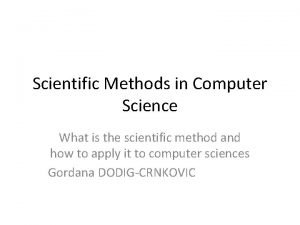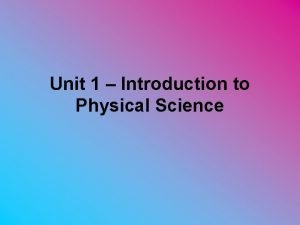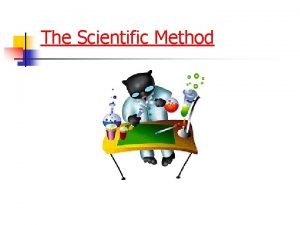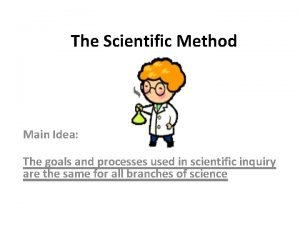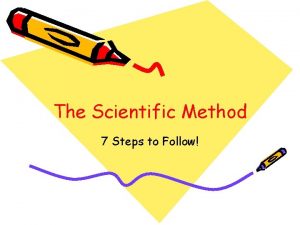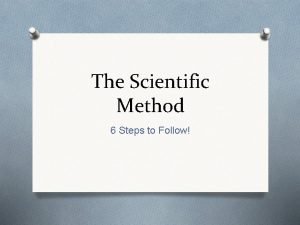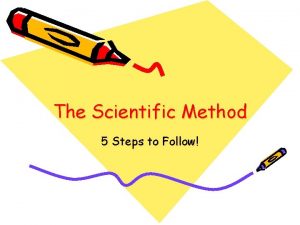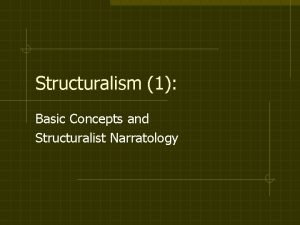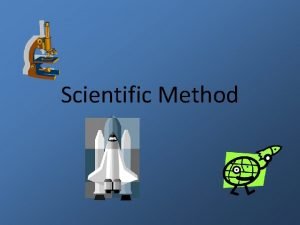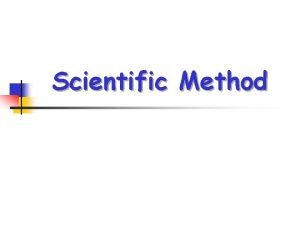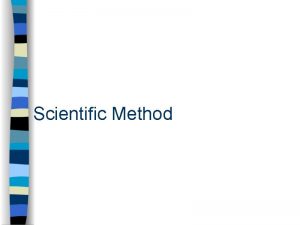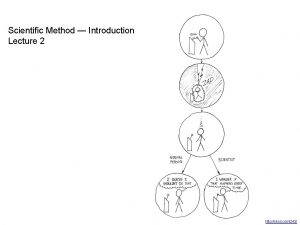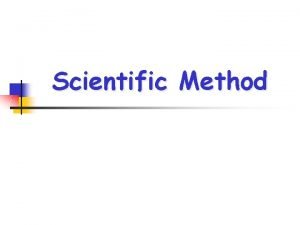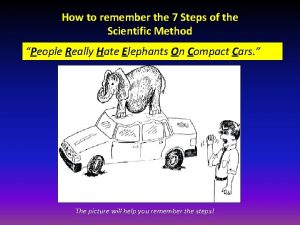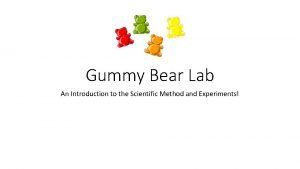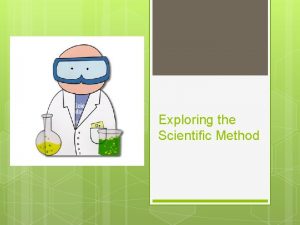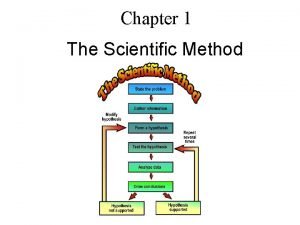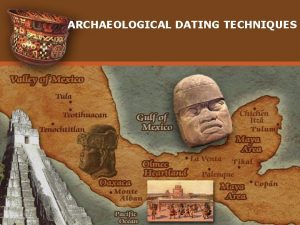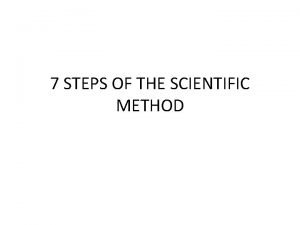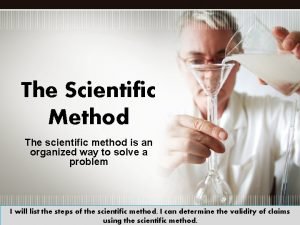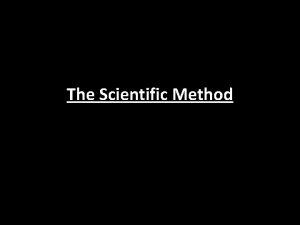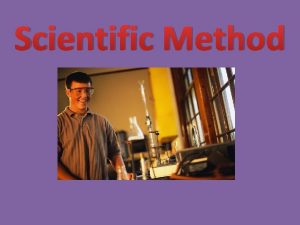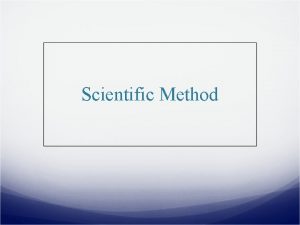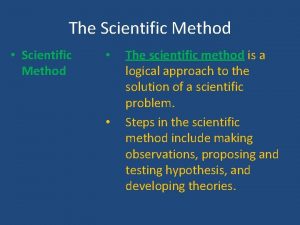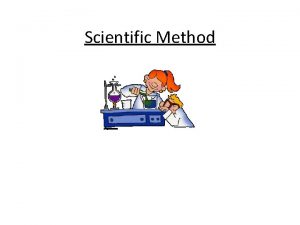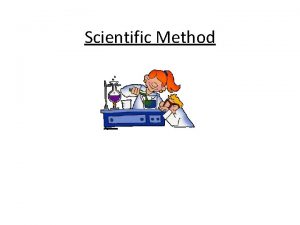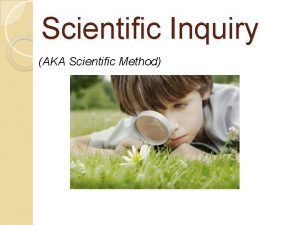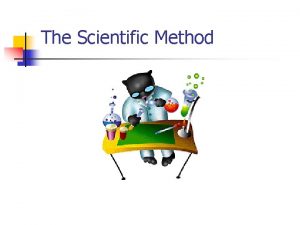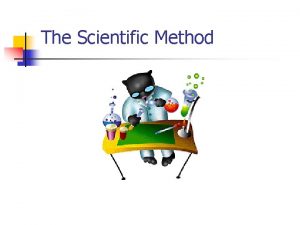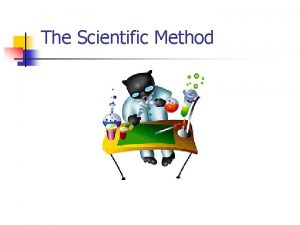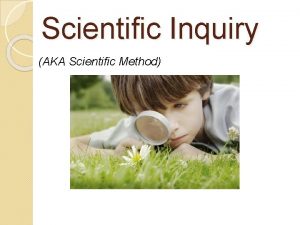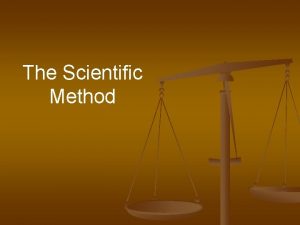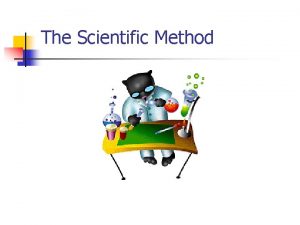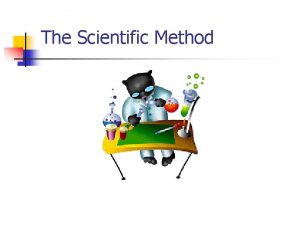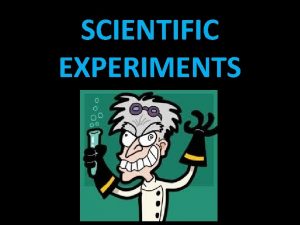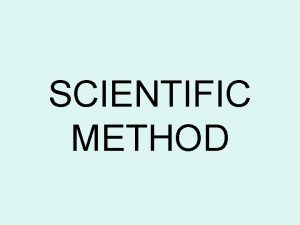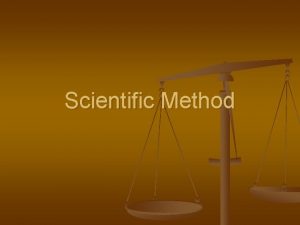Scientific Method Part 1 What is Science or








































- Slides: 40

Scientific Method Part 1

What is Science? or Here a few statements to test your current understanding of science! What Is Science? from Patuxent Wildlife Research Center, US Gov

What is science ? Science is a _____ for answering questions. What Is Science? from Patuxent Wildlife Research Center, US Gov

Science can prove anything, solve any problem or answer any question. (a)True or (b)False? False • Science actually attempts to disprove ideas (hypotheses). • Science is limited strictly to solving problems about the physical and natural world. • Explanations based on supernatural forces, values or ethics can never be disproved and thus do not fall under the realm of science. What Is Science? from Patuxent Wildlife Research Center, US Gov

Any study done carefully and based on observation is scientific. False • • Science must follow certain rules. • • The rules of science make the scientific process as objective as is possible. Objective = Not influenced by feelings, interests and prejudices; UNBIASED vs. Subjective = Influenced by feelings, interests and prejudices; BIASED What Is Science? from Patuxent Wildlife Research Center, US Gov

Science can be done poorly. What Is Science? from Patuxent Wildlife Research Center, US Gov

Different scientists may get different solutions to the same problem. What Is Science? from Patuxent Wildlife Research Center, US Gov

Steps in the Scientific Method n n n Observation Hypothesis Experiment Data Collection Conclusion Retest

Observations n n Gathered through your senses A scientist notices something in their natural world

Observations n An example of an observation might be noticing that many salamanders near a pond have curved, not straight, tails

Hypothesis n n n Must be testable Usually written as If…Then…statements Predicts an outcome

Which one is testable? n n Aliens come from Mars. Women are unpredictable. Roses bloom in May. Blue is the best color ever.

Hypothesis n An example of a hypothesis might be that “If pollutants are added to a salamander’s habitat, then they will have curved tails”

n n Observation: An ad claims to have the best detergent for removing grass stains. Hypothesis: If I wash grass-stained jeans in these three brands of detergents, then the promoted detergent will remove stains best.

n n Observation: Older people pick up loose change. Hypothesis: If I stick quarters to the floor, then more older people will attempt to pick it up than younger people.

Experiment n A procedure to test the hypothesis.

Experiment Variable – factor in the experiment that is being tested A good or “valid” experiment will only have ONE variable being tested!

Controls and Variables n An experimenter changes one factor (variable) and observes or measures what happens.

Variables n Variables come in three varieties: Independent variable n Dependent variable n Control variables n

The factor that is changed is known as the independent variable. n The factor that is measured or observed is called the dependent variable. n

DRY MIX Dependent, Responding, Y-axis n Manipulated, Independent, X-axis n

If I stick quarters to the floor, then more older people will attempt to pick it up than younger people. n Independent variable – People’s age n Dependent variable - # of people

If I wash grass-stained jeans in these three brands of detergents, then the promoted detergent will remove stains best. n Independent variable – three brands n Dependent variable – removed stain?

The more sugar I add to yeast, the longer it will bubble. n Independent variable – amount of sugar n Dependent variable – time

My younger siblings are more active in the morning. n Independent variable – time n Dependent variable – activity level

The Control Variable The experimenter makes a special effort to keep other factors constant so that they will not effect the outcome. n Anything that COULD change, but is not. n

What is the Purpose of a Control? Controls are NOT being tested n Controls are used for COMPARISON n

What are the controlled variables? Quarters on floor n Grass-stained jeans n Sugar in yeast n Activity of younger siblings n

One more thing… it is best to make several trials with each independent variable. Three or more trials are generally the right number.

Data Results of the experiment n May be quantitative (numbers) or qualitative n

Data Must be organized n Can be organized into charts, tables, or graphs n

Scientific Method Part 2 You have your data. Now what?

DRY MIX Dependent, Responding, Y-axis n Manipulated, Independent, X-axis n

Title Y-axis Dependent Responding (units) X-axis Independent Manipulated (units)

Quarters on floor # who tried to pick up Old Young 10 3

Yeast with sugar grams of sugar Time of bubbling (secs) 0. 5 15 1. 0 18 1. 5 25 2. 0 30 2. 5 34 3. 0 38

Effect of poison on dropping leaves # of leaves Time (secs) 0 5 1 10 5 15 8 20 9 25

Pulse during exercise Time since stopping Pulse (bpm) 30 s 118 60 s 90 90 s 83 120 s 79

Education and Age of HCP Teachers 18 -25 yrs old 25+ yrs old Bachelor’s degree 92% 80% Master’s/Ph. D 8% 20%

Conclusions n n With data in hand, look at hypothesis. Did you support or disprove it? You can NEVER prove a hypothesis.
 Information gathered during an experiment
Information gathered during an experiment Science buddies scientific method
Science buddies scientific method That's my favorite
That's my favorite How is a scientific law different from a scientific theory?
How is a scientific law different from a scientific theory? Symposium is a type of
Symposium is a type of Basic scientific skills
Basic scientific skills Scientific methods in computer science
Scientific methods in computer science K h d m d c m chart
K h d m d c m chart The science of scientific writing
The science of scientific writing Part part whole addition
Part part whole addition Unit ratio definition
Unit ratio definition Part part whole
Part part whole Technical description meaning
Technical description meaning Cocktail bar parts
Cocktail bar parts The phase of the moon you see depends on ______.
The phase of the moon you see depends on ______. Minitab adalah
Minitab adalah 7 steps of the scientific method
7 steps of the scientific method 7 steps of the scientific method
7 steps of the scientific method Goal of scientific method
Goal of scientific method Brainpop pop art quiz answers
Brainpop pop art quiz answers 7 step of scientific method
7 step of scientific method List the 6 steps of the scientific method
List the 6 steps of the scientific method 5 steps of scientific method
5 steps of scientific method How does the scientific method work
How does the scientific method work Narratology structuralism
Narratology structuralism Examples of problems using scientific method
Examples of problems using scientific method Scientific method example
Scientific method example Scientific method steps
Scientific method steps Test your hypothesis
Test your hypothesis Scientific method learning objectives
Scientific method learning objectives Xkcd scientific method
Xkcd scientific method Steps of scientific method
Steps of scientific method What is the order of the scientific method
What is the order of the scientific method People really hate elephants on compact cars
People really hate elephants on compact cars Gummy bear density lab answer key
Gummy bear density lab answer key Exploring the scientific method
Exploring the scientific method The fourth step in the scientific method is
The fourth step in the scientific method is Sir mortimer wheeler used scientific and soil layer
Sir mortimer wheeler used scientific and soil layer What are the 7 steps of the scientific method
What are the 7 steps of the scientific method Conclusion scientific method
Conclusion scientific method Examples of problems using scientific method
Examples of problems using scientific method






